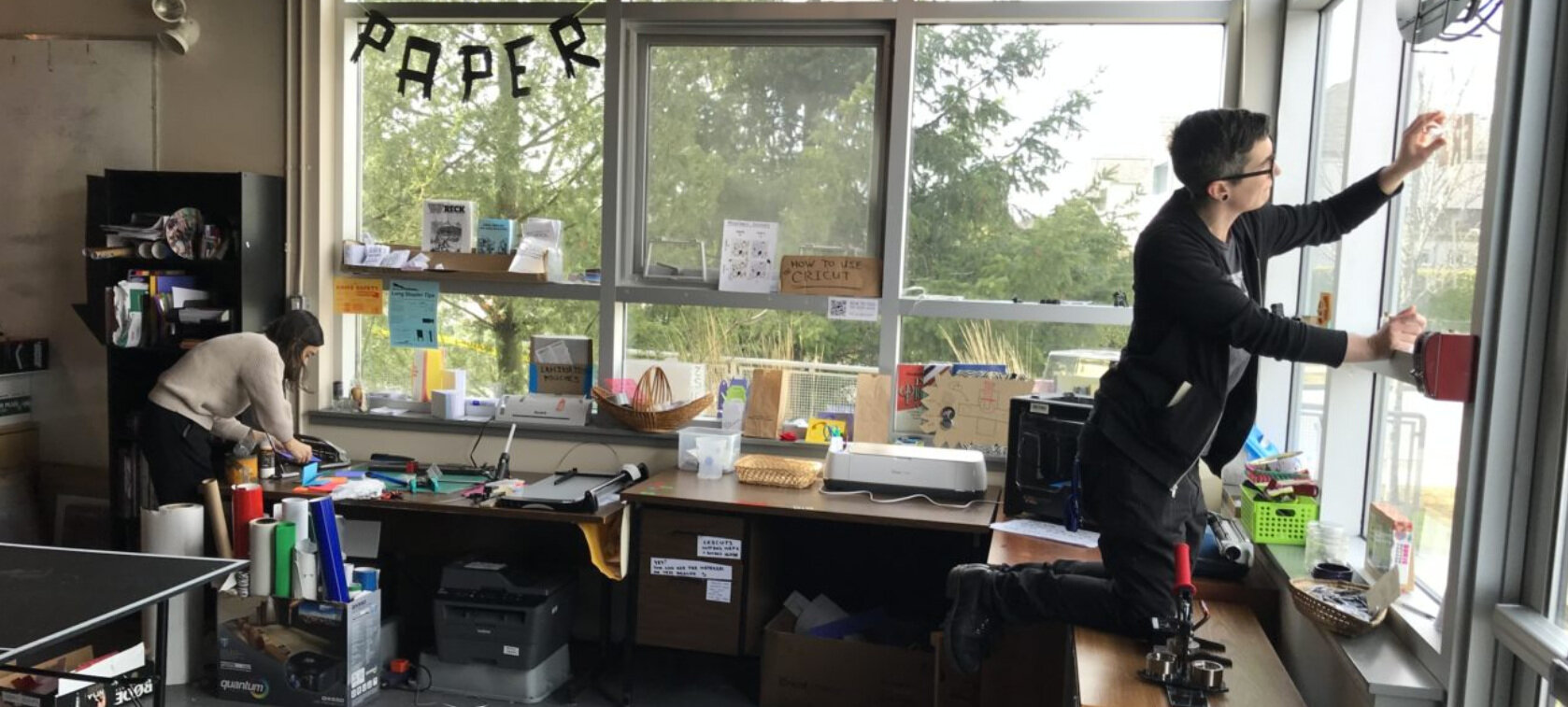Youth Centre Service Design
Just as the methodology of design can be used to develop objects, buildings, logos or posters, it can also be applied to service development. Service design is a user-centric, multidisciplinary and evidence-based approach to the development of services.
I applied the tools of service design to revamp a rural youth center that was not fully meeting the needs of the most vulnerable youth in the community.
Read below how I approached this project.
Understanding the Big Picture
With a desire to do more than shelter youth from the world, we got curious about what it was like to be a teen in Gibsons. We talked to young people themselves, parents, teachers and youth workers in the community. We used tools such as empathy maps, ad-hoc personas and stakeholders maps. We also looked at what other services were offered to teens in our community (and what type of services were not). From this community-anchored research, we distilled a few insights:
1) Teens, throughout their day, have few opportunities to spend time indoors in an unstructured manner. Two notable exceptions were the public library and Tim Horton’s.
2) There are a lot of extra-curricular sports activities available for teens in Gibsons, but limited art programming.
3) Teens wanted to engage in “real-world projects” such as starting a band, starting a small business, lobbying for environmental change, etc., but most of the resource made available to them pushed them towards “practice projects” such as taking music lessons, engaging in model UN, etc.
Empathy Map template
Ad Hoc Persona template
Brainstorming & Prototyping
With those insights in mind, we research what type of unstructured, artsy and “real-world-connected” initiatives for youth had been taken elsewhere (e.g., Purple Thistle, Centre Communidée, Girls Garage, etc.). We investigated the feasibility of opening a day resource centre for drop-outs and unschoolers. We also tested the idea of transforming our lounge into a maker space. In the end, informed by the community interests and physical limitations of our space, we decided to develop a concept around the theme of an art and design studio. We did some more research about existing graphic design lab and communal art studios such as Emily Carr’s COMD Studio and Portland’s Independent Publishing Resource Center).
With the general direction of an art and design drop-in studio in mind, we started doing small-scale low-budget tests (aka, prototypes) with the people attending the youth centre. For instance, we developed a button making corner with laminated instructions and observed how the teens were engaging with it. From those fast prototyping tests, we were able to identify what type of tools, prompts, projects and instructions were most engaging to participants. Once we understood what worked well (i.e, quickly completed projects with a friendly learning curve, tools that are both safe to use and hard to break as young people learn to use them in a self-directed manner, etc.) we invested a bit more time and money in designing the more permanent shape of the space.
testing different space layout and signage.
Trying out a button making station.
Button making instructions.
The Service
In its current form, the Graphic Lab is a free art & design studio for people age 12-18. Young people can access the drop-in to work on their self-directed projects. We equipped the space with tools such as a 3D printer, die cutter, silkscreening studio, sewing studio, bookbinding station, button and sticker making station, etc. We created simple printed instructions for youth and staff alike to refer to when interested in learning a new tool or technique. We encouraged peer-to-peer skill sharing. We collaborated with various community partners to reclaim art material that would otherwise be discarded (such as vinyl end of rolls, magnets, maps, etc.). People have used the space to create stickers for school fundraisers, develop flyers and buttons for environmental actions, print their illustrations on garments, and more.
As mentioned above, this is the current form of the Graphic Lab, but not necessarily its final form. Service design is an iterative and ongoing process. As we observe how youth uses the space, we adjust the offering accordingly.
New logo and signage. Learn more about the design of the logo here.
Buttons, silk-screening, photo light box and vinyl die cutting.
Die cutter and 3D printer.
Printers and design library.
Zine making and book binding corner.
Youth for Climate Action getting ready for a demonstration.
Creating vinyl decals.
Custom die cut stickers.












